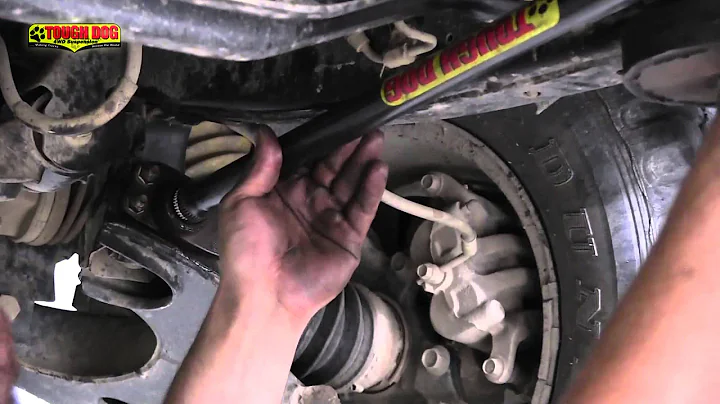Less Traumatic Technique to Remove Failed Dental Implants
Table of Contents
- 🌟 Introduction
- 🦷 Traditional Technique for Removal of Failed Dental Implants
- 🆕 Newer Technique for Less Invasive Implant Removal
- ⚙️ How to Use the Implant Removal Kit
- Choosing the Right Size Fixture Removal Screw
- Torquing the Screw
- Fitting the Fixture Removal Device
- Reverse Torquing to Loosen the Implant
- ✅ Advantages of the New Technique
- 👨⚕️ Managing the Extraction Site
- Loose or Fibrous Tissue Removal
- Grafting the Extraction Site
- Closure and Healing Process
- 🔄 Timeframe for Placement of a New Implant
- 💡 Highlights
🌟 Introduction
The removal of a failed dental implant can be a daunting and traumatic task, often requiring invasive surgical procedures. However, advancements in dental technology have introduced a new technique that offers a less invasive and more efficient approach to removing failed dental implants. This article will explore the traditional technique for implant removal, as well as the newer and less traumatic method utilizing a unique implant removal kit. We will also discuss the process of managing the extraction site and the timeframe for placing a new implant.
🦷 Traditional Technique for Removal of Failed Dental Implants
Traditionally, the removal of a failed dental implant involved a surgical osteotomy procedure using troughers. This technique required cutting the bone around the implant with a trough bur, which often resulted in a larger defect that necessitated bone grafting. This bone grafting was necessary to restore and build a foundation for a possible future replacement implant.
🆕 Newer Technique for Less Invasive Implant Removal
Fortunately, a newer technique has been developed that allows for a much less invasive and traumatic approach to removing failed dental implants. This technique makes use of a unique implant removal kit that applies high reverse torque forces to break the mechanical bond at the bone-implant interface. This high reverse torque, generally ranging from 200 to a maximum of 400 newton centimeters, enables easy removal of the implant. In some cases, a lower degree of reverse torque may be sufficient depending on the level of integration.
⚙️ How to Use the Implant Removal Kit
The implant removal kit consists of several components that need to be utilized in a specific manner for effective implant removal. Here is a step-by-step guide on how to use the kit:
1. Choosing the Right Size Fixture Removal Screw
First, an appropriate size fixture removal screw is engaged into the well of the implant. It should be rotated clockwise until it is tight. Different sizes of screws are available based on the top of the implant.
2. Torquing the Screw
The screw is then torqued clockwise using a wrench to a range of 40 to 80 newton centimeters.
3. Fitting the Fixture Removal Device
Next, a corresponding fixture removal device is fitted over the screw. It is turned counterclockwise until its serrated edges are engaged on the top of the implant platform. The wrench is used to ensure a secure fit.
4. Reverse Torquing to Loosen the Implant
Using the wrench, the fixture removal device is reverse stroked until the implant-bone bond is broken and the implant is loosened. Generally, a reverse torque of 200 to a maximum of 400 newton centimeters is sufficient to remove most implants. In cases where the implant does not rotate with this torque, a minimal osteotomy of about two to three millimeters at the crestal aspect can be performed before attempting reverse torquing again.
✅ Advantages of the New Technique
The new technique for removing failed dental implants offers several advantages over the traditional approach:
- Less Traumatic: The new technique does not require a surgical osteotomy, resulting in significantly less trauma to the surrounding bone.
- Preserved Bone: The size of the bony defect is limited to the actual size of the implant being removed, preserving the bone.
- Faster Procedure: The new technique is generally faster compared to the traditional method, reducing chair time for both the dentist and the patient.
👨⚕️ Managing the Extraction Site
After the implant is successfully removed, it is crucial to manage the extraction site to promote proper healing and preparation for a future replacement implant. Here are the steps involved in managing the extraction site:
1. Loose or Fibrous Tissue Removal
Any loose or fibrous tissue in the extraction site needs to be carefully cured to ensure a clean and healthy environment for healing.
2. Grafting the Extraction Site
In some cases, the extraction site may require bone grafting to restore its integrity and promote future implant placement. This involves packing mineralized freeze-dried bone into the site, being cautious not to extend it beyond the sinus floor level if it is communicating with the sinus.
3. Closure and Healing Process
Once the extraction site is adequately prepared, the wound is closed using a tensionless technique. A small amount of periosteal scoring may be necessary to release the flap and allow for a tension-free closure. The use of platelet-derived growth factor (PDGF) is highly recommended to aid in the healing process and maturation of the soft tissue. The site is then allowed to heal for about four to six months before a new implant can be placed.
🔄 Timeframe for Placement of a New Implant
It is essential to give the extraction site enough time to heal before considering the placement of a new implant. Typically, a healing period of four to six months is recommended to allow for proper bone regeneration and soft tissue maturation. It is crucial to evaluate the site's healing and consult with the patient to ensure optimal conditions for the successful placement of a new implant.
💡 Highlights
- Removal of failed dental implants can be less invasive and traumatic with the use of a unique implant removal kit.
- The new technique involves high reverse torque to break the bond between the implant and the bone, allowing for easy removal.
- The procedure is faster, preserves bone, and reduces trauma to the surrounding tissues.
- Managing the extraction site involves removing loose or fibrous tissue, grafting the site if necessary, and ensuring proper closure for healing.
- Placement of a new implant is recommended after a healing period of four to six months.
🙋♀️ Frequently Asked Questions
Q: Is the new implant removal technique suitable for all types of failed dental implants?
A: The new technique can be used to remove most dental implants. However, the degree of reverse torque required may vary depending on the level of integration.
Q: How long does the healing process take after implant removal?
A: It is generally recommended to allow the extraction site to heal for four to six months before considering the placement of a new implant.
Q: Are there any risks involved in the implant removal process?
A: While the new technique is less invasive and traumatic, there are potential risks associated with any dental procedure. It is essential to consult with a qualified dentist and discuss the specific risks and benefits based on the individual case.
Q: Can a new implant be immediately placed after removal?
A: In most cases, it is recommended to allow for a healing period before placing a new implant. This allows for proper bone regeneration and optimal conditions for a successful implant placement.







